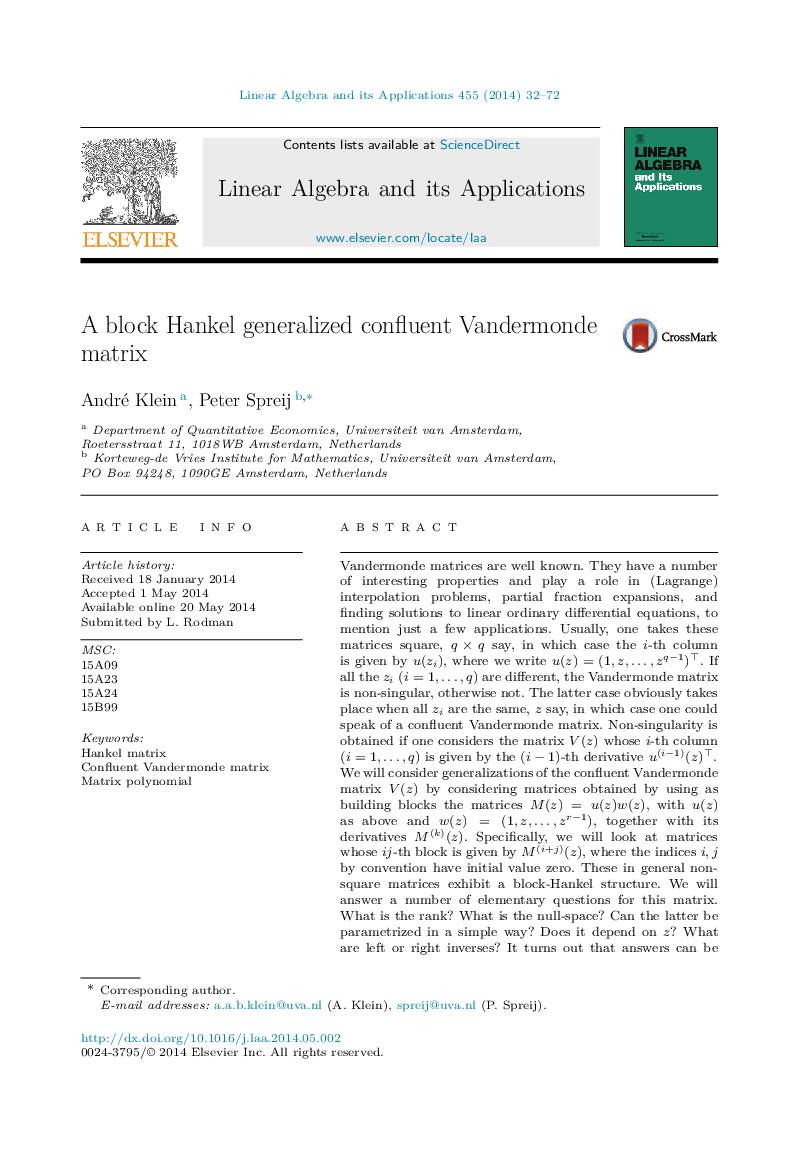| Article ID | Journal | Published Year | Pages | File Type |
|---|---|---|---|---|
| 6416399 | Linear Algebra and its Applications | 2014 | 41 Pages |
Vandermonde matrices are well known. They have a number of interesting properties and play a role in (Lagrange) interpolation problems, partial fraction expansions, and finding solutions to linear ordinary differential equations, to mention just a few applications. Usually, one takes these matrices square, qÃq say, in which case the i-th column is given by u(zi), where we write u(z)=(1,z,â¦,zqâ1)â¤. If all the zi (i=1,â¦,q) are different, the Vandermonde matrix is non-singular, otherwise not. The latter case obviously takes place when all zi are the same, z say, in which case one could speak of a confluent Vandermonde matrix. Non-singularity is obtained if one considers the matrix V(z) whose i-th column (i=1,â¦,q) is given by the (iâ1)-th derivative u(iâ1)(z)â¤.We will consider generalizations of the confluent Vandermonde matrix V(z) by considering matrices obtained by using as building blocks the matrices M(z)=u(z)w(z), with u(z) as above and w(z)=(1,z,â¦,zrâ1), together with its derivatives M(k)(z). Specifically, we will look at matrices whose ij-th block is given by M(i+j)(z), where the indices i,j by convention have initial value zero. These in general non-square matrices exhibit a block-Hankel structure. We will answer a number of elementary questions for this matrix. What is the rank? What is the null-space? Can the latter be parametrized in a simple way? Does it depend on z? What are left or right inverses? It turns out that answers can be obtained by factorizing the matrix into a product of other matrix polynomials having a simple structure. The answers depend on the size of the matrix M(z) and the number of derivatives M(k)(z) that is involved. The results are obtained by mostly elementary methods, no specific knowledge of the theory of matrix polynomials is needed.
